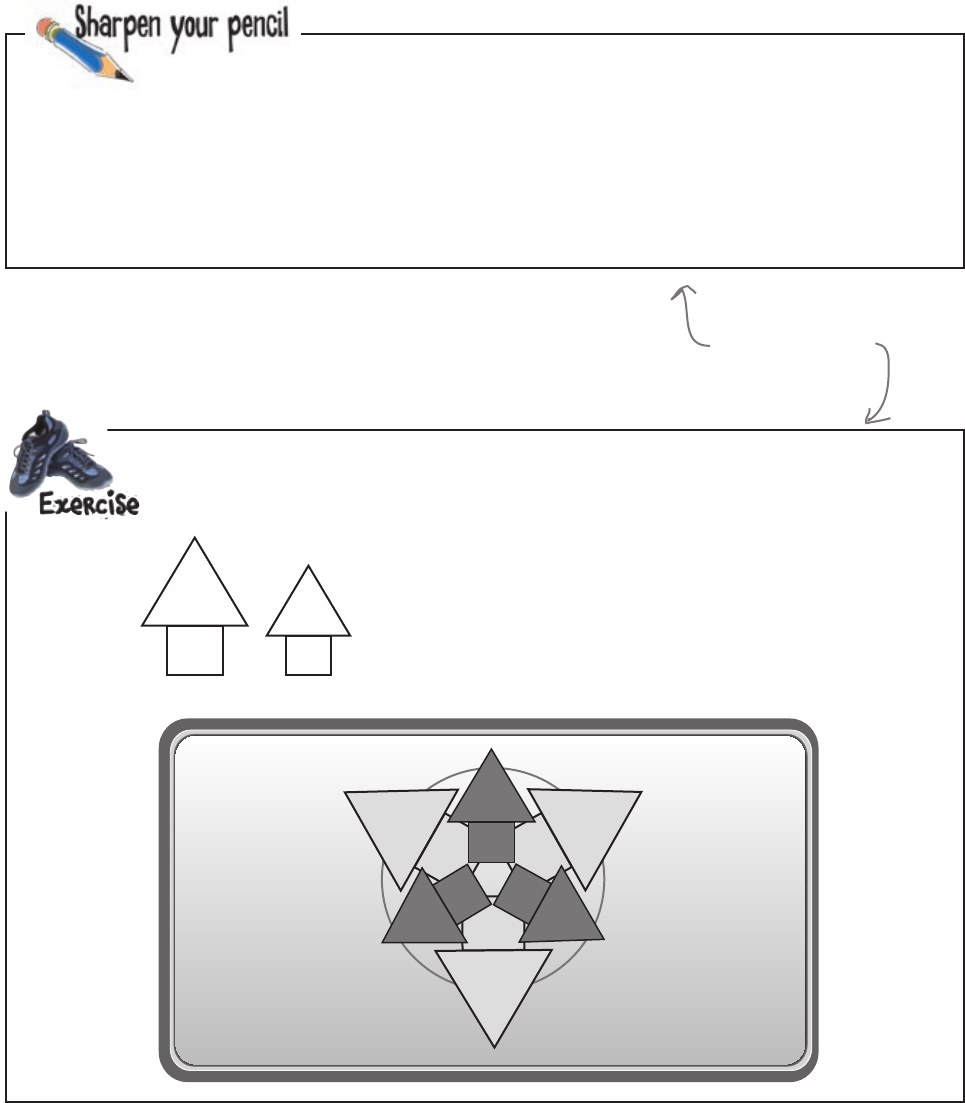
pick a single starting point
Ratios need to be consistent
The ratios we took from the diagram are individually
correct, but they describe different relationships between
the lengths of our lines.
On our design, we need to make sure that we reflect all
the ratios at the same time, which means we have to pick
one thing and then work everything out relative to that.
4
3
2
1
W
e need t
o make
a
ll these ra
tios
w
ork t
ogether.
Let’s choose this
2
Now we need to
1
3
We’re ready
biggest arrow to
include the 4:3 ratio
between the large
to use ratios!
be the thing we’re
working relative to.
and small arrows.
4
4
Divide 4 by 2 to get the
correct ratio for the square.
2
3
Divide 3 by 2 to get the
3
1
correct ratio for the square.
2
1.5
96 Chapter 2
That decimal
looks like it could be
tricky; if we picked some
different numbers, could
we get rid of it?
While the decimal isn’t really a problem, it’s certainly
easier to work with ratios that are only whole numbers:
your brain can compare ratios like 3:4 and 7:8 in a way
that you probably can’t just figure out which is bigger
out of 2.67:5.3 and 4.56:6.2.

Use y
our answ
er
s from
similarity and congruence
The ratios have turned out to be 4, 3, 2, and 1.5.
What would be the smallest set of whole numbers you could
substitute and still keep the ratios the same?
Time to get etching! If the design will fit on Liz’s brother’s iPod with the biggest arrow
head edges at 2.4cm long, what lengths do the other lines—a, b, c—need to be?
here in this answ
er.
2.4cm
b
a
c
you are here 4 97

double it up
The ratios have turned out to be 4, 3, 2, and 1.5.
What would be the smallest set of whole numbers you could
substitute and still keep the ratios the same?
If we multiply all the ratios by 2, then we
get a set of whole numbers with the same
ratios: 8, 6, 4, and 3.
4
2
3
1.5
8
6
4
3
98 Chapter 2
Time to get etching! If you make the big arrowhead edges 2.4cm long, what lengths
do the other lines—a, b, c—need to be?
b
a
c
First we need to find the factor for scaling a, b, and c:
The length with a ratio of 8 is 2.4cm, so scale = 2.4cm = 0.3cm
8
Then multiply all the other ratios by 0.3: a = 6 x 0.3 = 1.8 cm
b = 4 x 0.3 = 1.2cm
c = 3 x 0.3 = 0.9cm
2.4cm
Get Head First 2D Geometry now with the O’Reilly learning platform.
O’Reilly members experience books, live events, courses curated by job role, and more from O’Reilly and nearly 200 top publishers.

